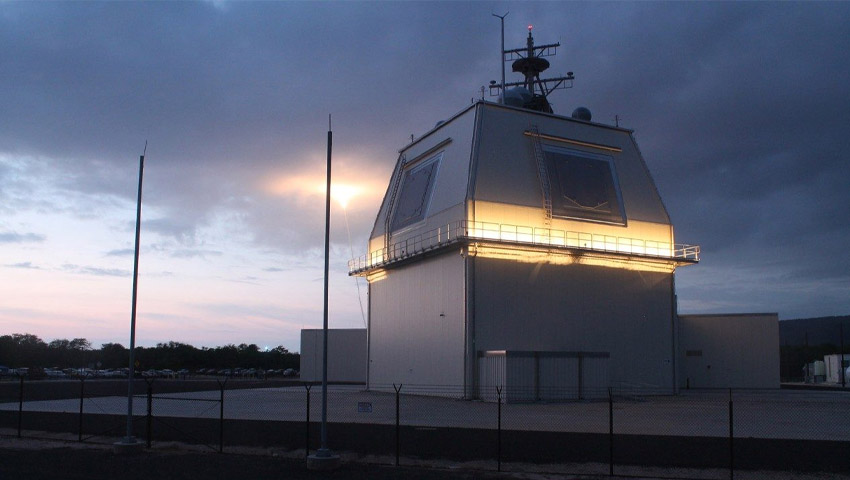Lockheed Martin has announced partnerships with the US government, Spain, Japan and Canada to provide its next-generation solid state radar (SSR) technology.
To continue reading the rest of this article, please log in.
Create free account to get unlimited news articles and more!
This SSR technology will provide front-line defence to the respective nations around the world with cutting-edge air and missile defence capabilities – as part of a growing SSR family of 24 platforms, ushering in the next generation of maritime and ground-based advanced radar technology.
The basis of SSR is the Long Range Discrimination Radar (LRDR), which the Missile Defence Agency (MDA) selected Lockheed Martin to develop in 2015 with an on-track delivery set for 2020.
In 2019, Lockheed Martin’s SSR for Aegis Ashore Japan was designated by the US government as AN/SPY-7(V)1.
SPY-7’s core technology is derived from the LRDR program, which has been declared Technical Readiness Level 7 by the US government.
The technology consists of a scalable and modular gallium nitride (GaN) based “subarray” radar building block, providing advanced performance and increased efficiency and reliability to pace ever-evolving threats.
As part of its investment into the advancement of SSR, Lockheed Martin built a Solid State Radar Integration Site to conduct detailed testing to prove the maturity of the system and reduce fielding risk.
Scaled versions of the LRDR site will be utilised for future radar programs including Aegis Ashore Japan, Canadian Surface Combatant (CSC) and MDA’s Homeland Defence Radar in Hawaii.
Solid state offers powerful capabilities to detect, track and engage sophisticated air and missile threats, including the very complicated task of discriminating – or picking out – and countering lethal objects present in enemy ballistic missiles.
The Lockheed Martin SSR uses state-of-the art hardware and an innovative software-defined radar architecture to meet current requirements while providing extensibility features to pace evolving threats for decades to come.
Its unique maintain-while-operate capability provides very high operational availability and enables continuous 24/7 operation.
SSR is a multi-mission system providing a wide range of capabilities, from passive situational awareness to integrated air and missile defence solutions.
The combined capability and mission flexibility of Lockheed Martin’s SSR has gained the attention of new and current users of the Aegis Weapon System, the world’s premier air and missile defence combat suite.
Spain’s Ministry of Defense stated its preference for Lockheed Martin’s technology for its five F-110 Class frigates in 2017 and awarded the ship construction order to Navantia in 2019. These ships will host the first-ever S-band variants of the SPY-7 radar for the Spanish Navy.
Production will be a collaboration between Lockheed Martin and Spanish company Indra. When the frigates deploy in 2026, the SPY-7 variant will be integrated as part of the Aegis Weapon System.
The frigates will also incorporate the International Aegis Fire Control Loop (IAFCL) integrated with SCOMBA, the national combat system developed by Navantia.
Canada’s Department of National Defence also selected Lockheed Martin as the naval radar provider for its 15 CSC ships.
Lockheed Martin’s IAFCL is integrated with Canada’s combat management system, CMS 330, developed by Lockheed Martin Canada for the Royal Canadian Navy’s Halifax Class ships.
The program will make Canada the owner of the world’s second largest Aegis fleet, and the SPY-7 radar variant will enable CSC to conduct highly advanced maritime missions for decades to come.
Including LRDR, the 24 Lockheed Martin SSR platforms selected to date represent a total of 91 antennas of varying sizes, collectively composed of over 15,000 subarrays.
On LRDR alone, Lockheed Martin has produced an equivalent of eight Aegis shipsets to-date. The US government’s LRDR has a planned service life for decades to come and will be supported and maintained throughout that period.
This ensures the US and its allies will have a large and stable base of cost-effective logistics and support for many years in the future.
Headquartered in Bethesda, Maryland, Lockheed Martin is a global security and aerospace company that employs approximately 105,000 people worldwide and is principally engaged in the research, design, development, manufacture, integration and sustainment of advanced technology systems, products and services.
Stephen Kuper
Steve has an extensive career across government, defence industry and advocacy, having previously worked for cabinet ministers at both Federal and State levels.

 Login
Login








